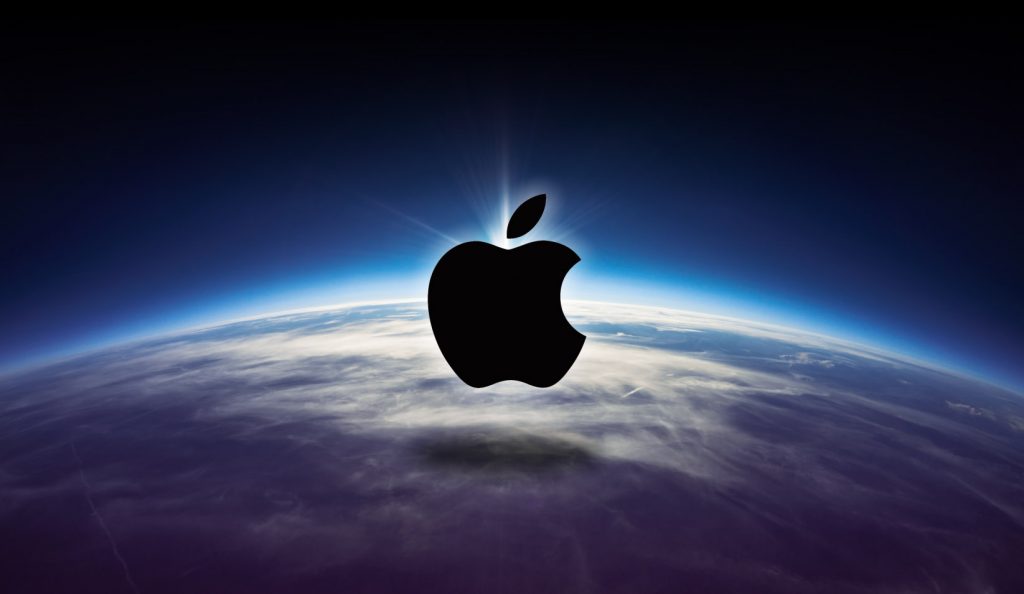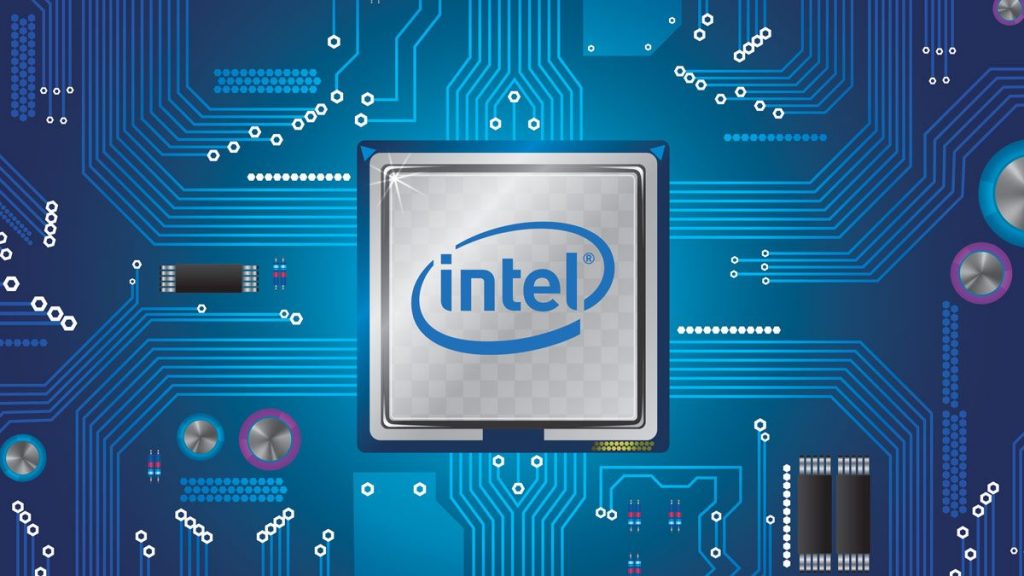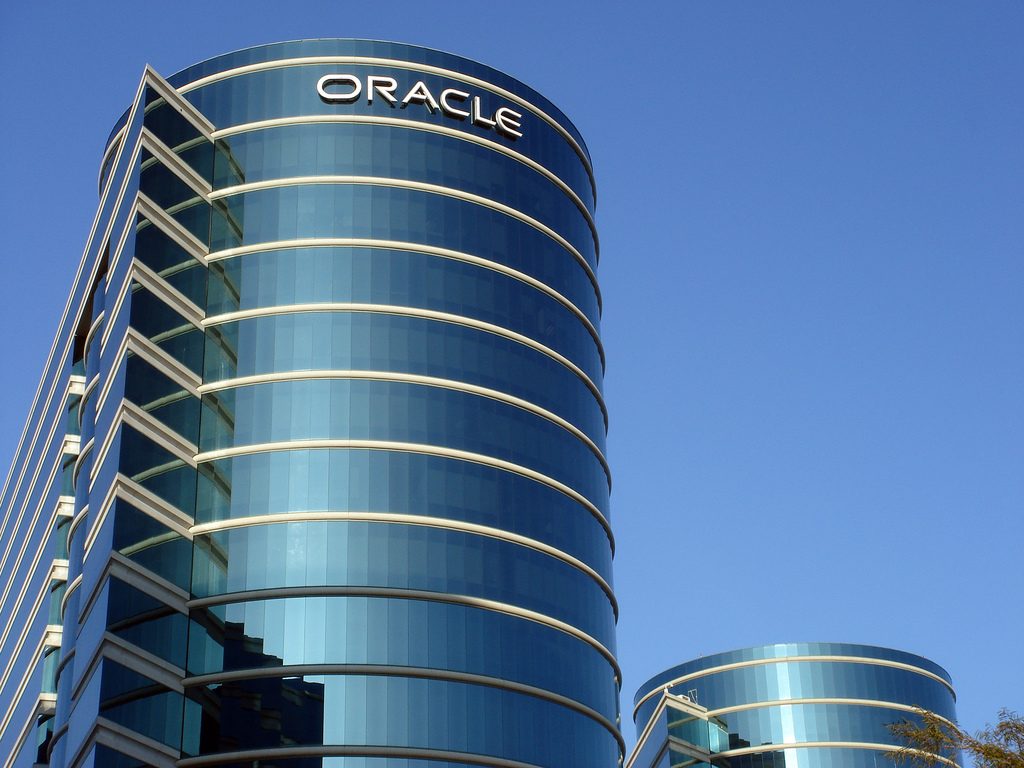In this article, we will look at the top-10 technology companies in the US by their 2016 revenues. We will provide the revenues, year-on-year (YoY) revenue growth, net profits, and net profit margin for each of the top-10 companies for the last five years. At the end of the article, we will briefly share our research methodology and provide revenues and profits insights about the US Technology sector.
US Top-10 Technology Companies Revenues and Profits
The top-10 technology companies in the US by 2016 revenues are: Apple, Amazon, Alphabet (parent company of Google), Microsoft, IBM, Intel, HP Enterprise, Cisco, HP Inc, and Oracle. The revenues and profits details of these companies are as follows:
1. Apple Inc
Apple is ranked no. 1 in the ‘US Top-10 Technology Companies by 2016 Revenues’ list. Apple is not only the leader in technology sector by revenues and profits but also is the world’s most valuable company by market capitalization. Apple makes money primarily by selling iPhone, iPad, Mac computers, iPod, Apple Watch, Apple TV, a portfolio of consumer and professional software applications, iCloud services, and a range of accessory, service and support offerings. For more details on the Apple business model, please see our article on ‘How Apple Makes Money?’
Apple generated $215.6 billion of revenues during 2016, down -7.7% yoy, from $233.7 billion in 2015. Apple reported a net income of $45.7 billion during 2016 and the net profit margin was 21.2%.

2. Amazon Com Inc
Amazon is ranked no. 2 in the ‘US Top-10 Technology Companies by 2016 Revenues’ list. During 2016, Amazon was the leader among the technology top-10 companies in revenue growth. But, in net profit and net profit margins, Amazon lagged all the other top-10 companies. Amazon makes money primarily by selling consumer products and subscriptions through its North America and International websites. In addition, Amazon also sells cloud services for on-demand delivery of IT resources and applications via Internet.
Amazon generated $136.0 billion of revenues during 2016, up 27.1% yoy, from $107.0 billion in 2015. Amazon reported a net income of $2.4 billion during 2016 and the net profit margin was 1.7%.

3. Alphabet Inc
Alphabet is ranked no. 3 in the ‘US Top-10 Technology Companies by 2016 Revenues’ list. Alphabet is the parent company of Google. All non-Google businesses are referred to as ‘Other Bets’. In 2016, they contributed less than 1% to the Alphabet’s total revenues and they were not profitable. So, Alphabet generates most of its revenues and profits from Google. Google makes money primarily by selling online advertising over Google owned and operated properties and over Google Network member’ websites. For more details on the Google business model, please see our article on ’How Google Makes Money?’
Alphabet generated $90.3 billion of revenues during 2016, up 20.4% yoy, from $75.0 billion in 2015. Alphabet reported a net income of $19.5 billion during 2016 and the net profit margin was 21.6%.

4. Microsoft Corp
Microsoft is ranked no. 4 in the ‘US Top-10 Technology Companies by 2016 Revenues’ list. Microsoft is the leader in the Software industry by revenues and profits. Microsoft makes money by licensing and supporting a wide range of software products, by offering an array of consulting services and cloud-based services, by selling devices that integrate with its cloud-based services, and by delivering relevant online advertising to a global audience. For more details on the Microsoft business model, please see our article on ‘How Microsoft Makes Money?’
Microsoft generated $85.3 billion of revenues during 2016, down -8.8% yoy, from $93.6 billion in 2015. Microsoft reported a net income of $16.8 billion during 2016 and the net profit margin was 19.7%.

5. International Business Machines Corp
IBM is ranked no. 5 in the ‘US Top-10 Technology Companies by 2016 Revenues’ list. IBM is a leader in the IT consulting and outsourcing services industry. IBM makes money by selling a broad range of IT hardware, software, and services to businesses across industries all over the globe. IBM combines its broad mix of capabilities to provide integrated solutions and platforms to its clients. For more details on the IBM business model, please see our article on ‘How IBM Makes Money?’
IBM generated $79.9 billion of revenues during 2016, down -2.2% yoy, from $81.7 billion in 2015. IBM reported a net income of $11.9 billion during 2016 and the net profit margin was 14.9%.

6. Intel Corp
Intel is ranked no. 6 in the ‘US Top-10 Technology Companies by 2016 Revenues’ list. Intel is a leader in the Semiconductor industry. No other semiconductor company comes close to Intel in terms of revenues. Intel makes money by selling a broad range of semiconductor products that include microprocessors, chipsets, motherboards, flash memory, and wired and wireless connectivity products. Intel semiconductor products are the building blocks integral to computers, servers, smartphones, tablets, and networking and communications products. For more details on the Intel business model, please see our article on ‘How Intel Makes Money?’
Intel generated $59.4 billion of revenues during 2016, up 7.3% yoy, from $55.4 billion in 2015. Intel reported a net income of $10.3 billion during 2016 and the net profit margin was 17.4%.

7. Hewlett Packard Enterprise Co
HP Enterprise is ranked no. 7 in the ‘US Top-10 Technology Companies by 2016 Revenues’ list. HP Enterprise was created in November 2015, when Hewlett Packard split its PC and printers business from its enterprise products and services business. Just like IBM, HP Enterprise makes money by selling a broad range of IT hardware, software, and services to businesses across industries all over the globe.
HP Enterprise generated $50.1 billion of revenues during 2016, down -3.8% yoy, from $52.1 billion in 2015. HP Enterprise reported a net income of $3.2 billion during 2016 and the net profit margin was 6.3%.

8. Cisco Systems Inc
Cisco is ranked no. 8 in the ‘US Top-10 Technology Companies by 2016 Revenues’ list. Cisco is a leader in the networking equipment and services industry. No other networking equipment company comes close to Cisco in terms of revenues. Cisco makes money by selling products and services for transporting data, voice, and video traffic across intranets, extranets, and the Internet.
Cisco generated $49.2 billion of revenues during 2016, up 0.2% yoy, from $49.2 billion in 2015. Cisco reported a net income of $10.7 billion during 2016 and the net profit margin was 21.8%.

9. HP Inc
HP Inc is ranked no. 9 in the ‘US Top-10 Technology Companies by 2016 Revenues’ list. HP Inc was created in November 2015, when Hewlett Packard split its PC and printers business from its enterprise products and services business. HP Inc makes money by selling personal computing and other access devices, imaging and printing products, and related technologies, solutions and services to individual consumers, small- and medium-sized businesses, large enterprises, and customers in the government, health and education sectors.
HP Inc generated $48.2 billion of revenues during 2016, down -6.3% yoy, from $51.5 billion in 2015. HP Inc reported a net income of $2.5 billion during 2016 and the net profit margin was 5.2%. HP Inc revenues are from 2014 to 2016. For 2012 and 2013, HP Enterprise revenues are also included.

10. Oracle Corp
Oracle is ranked no. 10 in the ‘US Top-10 Technology Companies by 2016 Revenues’ list. Oracle is the second-largest software maker by revenue, after Microsoft. Oracle makes money by selling database software, middleware, a suite of business applications, enterprise servers, and cloud platforms and services. Oracle also offers a wide array of consulting, financing, support, and education services. Among the top-10 companies in the technology sector, Oracle had the highest net profit margin during 2016.
Oracle generated $37.0 billion of revenues during 2016, down -3.1% yoy, from $38.2 billion in 2015. Oracle reported a net income of $8.9 billion during 2016 and the net profit margin was 24.0%.

Our Research on the Top 3000 Companies in the US
All the analysis in this article is from our proprietary financial database of the top 3000 public companies in the US. We call it R&P Screener. It helps investors and B2B sales & marketing professionals “quickly and easily” identify the revenue growth leaders/laggards, most/least profitable companies, and top-n (top-5, top-10, top-20 etc.) companies by revenues, revenue growth, net profits, net profit growth or net profit margin.
R&P Screener ranks the top 3000 public companies in the US by their 2016 revenue. The combined revenues of the US top 3000 companies were $14.49 trillion during 2016. The combined net income was $1.03 trillion. Here are some brief insights about the US top 3000 companies from the R&P Screener (April 2017 Update):
- The revenues are concentrated in the mega corporations (companies with revenues greater than $50 billion). There were 54 mega corporations in the top 3000 companies in the US during 2016. Those 54 mega companies combined revenues during 2016 were $5.76 trillion. This represents a share of 39.7% in the total revenues of $14.49 trillion of the 3000 companies. There were 1610 medium-size companies & their combined revenues during 2016 were $594 billion.
- Just like the revenues, the profits are also concentrated in the mega corporations. The 54 mega corporations had a combined net income of $422 billion during 2016. This represents a share of 40.9% in the total net income of $1.03 trillion of the 3000 companies. On the other hand, 1610 medium-size companies combined net income during 2016 was just $23 billion.
- There were 2224 companies (74.8% of the total) with positive net income and 756 companies (25.2% of the total) with negative net income during 2016.
- There were 1985 companies (66.2% of the total) with a positive revenue growth and 1015 companies (33.8% of the total) with a negative revenue growth during 2015-16.
- There were 1236 companies (41.2% of the total) with a positive net income growth and 800 companies (26.7% of the total) with a negative net income growth during 2015-16. For 964 companies (32.1% of the total), we could not compute net income growth because their net income was negative during 2015 or 2016.
- California, Texas, New York, Illinois, and Massachusetts are the top five states in terms of number of companies with headquarters locations. A total of 1309 companies (43.6% of the total) have headquarters in these states. The combined revenues of these companies were $5.96 trillion (41.1% of the total) during 2016.The combined revenues of the US top 3000 companies were $14.49 trillion during 2016. The combined net income was $1.03 trillion.
For detailed insights about the top 3000 companies, please see our article on Top-10 insights from US Top-3000 Companies Revenues and Profits Analysis 2016.

US Technology Sector Revenues and Profits
R&P Screener provides revenues and profits details of 406 public companies in the technology sector in the US. The combined revenues of those companies were $1.66 trillion during 2016 and the combined net profit of those companies were $192.5 billion. The total revenues increased from $1.61 trillion during 2015 to $1.66 trillion during 2016 at an annual revenue growth rate of 3.6%. The technology sector comprises of six key industries. The number of companies and the combined revenues of companies in those industries are as follows:
Computer Systems and Peripherals industry consists of 20 companies with a combined revenues of $307 billion during 2016. The industry includes companies primarily engaged in manufacturing of personal computers, servers, mainframes, workstations, and other computer accessories and peripherals such as storage drives, mice, keyboards and printers. It also includes manufacturers of mobile phones and tablets.
Software industry consists of 140 companies with a combined revenues of $239 billion during 2016. The industry includes businesses providing software products such as operating systems, productivity suites, enterprise software, data and analysis software, advertising and marketing software, engineering and manufacturing software, networking software, and IT management software. It also includes companies providing industry-specific software focused on different sectors such as Financials, Automotive, Telecom, Utilities, Travel, Real Estate, Media, and Publishing.
Semiconductor industry consists of 70 companies with a combined revenues of $208 billion during 2016. The industry includes companies primarily engaged in manufacturing and distribution of semiconductor products such as microprocessors, chipsets, motherboards, flash memory, and wired and wireless connectivity products. It also includes companies that provide semiconductor equipment and services to the semiconductor industry.
IT Consulting and Outsourcing industry consists of 28 companies with a combined revenues of $254 billion during 2016. The industry includes companies primarily engaged in providing information technology consulting and outsourcing services to other businesses. The services include IT consulting, systems integration, application development and management, IT infrastructure management, and network operations management.
Networking Equipment and Services industry consists of 30 companies with a combined revenues of $81 billion during 2016. The industry includes companies primarily engaged in manufacturing and distribution of networking and communications equipment for transporting data, voice, and video traffic across intranets, extranets, and the Internet. The key products include routers and switches for local and wide-area networks, cable modems, teleconferencing equipment, and wireless access points.
Internet industry consists of 74 companies with a combined revenues of $358 billion during 2016. The industry includes Internet-based businesses providing products and services such as search engines, social networking, web hosting, email, domain name registration, and eCommerce. It also includes industry information/services portals focused on different sectors such as Financials, Automotive, Travel, Health, Real Estate, Media, and Publishing.
Other consists of 44 companies with a combined revenues of $215 billion during 2016. It includes companies providing products such as photocopiers, fax machines, point of sale machines, printed circuit boards, audio/video technologies, and video games.

Notes
Fiscal Year versus Calendar Year
The reported revenues and net income correspond to the fiscal year of the companies. If a company’s fiscal year ended in September 2016, then we report revenues for the twelve-months period ending in September 2016. Similarly, if a company’s fiscal year ended in May 2016, then we report revenues for the twelve-months period ending in May 2016.
Which companies are included in the R&P Screener?
- R&P Screener includes US Companies listed in New York Stock Exchange (NYSE), Nasdaq, and Amex (now known as NYSE markets). These companies regularly file their quarterly (10-Q) and annual (10-K) reports with Securities and Exchange Commission (SEC) in the US. These companies were incorporated in US and have headquarters in US as well.
- US companies that were founded in US, but have headquarters outside the US are also included. These companies have headquarters outside the US due to taxation benefits, foreign governments incentives, proximity to customers, or some other reasons. Since more than 50% of the stocks of these companies are traded in US stock exchanges, they file 10-Ks and 10-Qs similar to the US-headquartered companies.
- All the companies in the R&P Screener had revenues of more then $50 million in 2016.
Which companies are not included in the R&P Screener?
- US companies listed in OTC markets.
- Private companies in the US.
- Any companies delisted from NYSE, Nasdaq, or Amex stock exchanges. These companies may have been acquired, filed for bankruptcy, or may have become private entities.
- Any foreign companies listed in US stock exchanges. These companies do not file 10-Q or 10-K. Instead, they provide their annual financial information in 20-F reports.









